#flange size
Explore tagged Tumblr posts
Text
Flange Size Matters 🤍🍼💦
Things I wish I knew when I first started using a breastpump. Flange size matters! Make sure you have the right fit.
0 notes
Text
Hello everyone! If you're a new mom or expecting, you might be exploring the best options for breastfeeding and expressing milk. One essential aspect of using a breast pump effectively is understanding the breast pump flange size.
The right flange size can make a significant difference in your pumping experience. It ensures comfort and efficient milk expression. Momcozy offers a fantastic range of breast pumps, and their flange size guidance is a helpful resource to find your perfect fit.
Choosing the correct size can help prevent discomfort and improve milk flow, allowing you to enjoy a more pleasant pumping experience. Remember, every mom is unique, so take the time to measure and select the flange that suits you best.
Happy pumping, and embrace this beautiful journey of motherhood with confidence!
0 notes
Video
youtube
Haipei Industry Stainless Steel Flange
#youtube#Haipei Industry Custom Big Size 1/2~72Sch40 Sch80 Class150~900 High Pressure General Industry Blind Stainless Steel Flange Professional Cus
0 notes
Text
Discovering the Perfect Fit: Momcozy Flange Sizing for Comfort!
Let's talk about the importance of finding the right flange size when it comes to breastfeeding and pumping. Momcozy offers a variety of flange sizes to ensure that every mom can find the perfect fit for her comfort and efficiency.
Have you tried Momcozy's products? Share your experiences and any tips you have for selecting the right flange size! Remember, a well-fitted flange can make all the difference in your pumping journey.
Post a picture of your Momcozy setup and let's celebrate the joy of motherhood together!
0 notes
Text
Swing Check Valve Manufacturers in Ahmedabad Gujarat - Gold Techno Casting
Gold Techno Casting - Leading swing check valve manufacturers in Ahmedabad, Gujarat. We provide high-quality, durable industrial check valves for various applications. Get customized solutions, ISO-certified products, and reliable performance. Contact us today!

Google Map:--> https://maps.app.goo.gl/RnpnTrRdbLToF5YWA
Swing Check Valve Manufacturers in Ahmedabad Gujarat, Swing Check Valve Manufacturers in Ahmedabad, Swing Check Valve Manufacturers in Gujarat, Swing Check Valve in Ahmedabad, Swing Check Valve in Gujarat, Swing Check Valves Manufacturer from Ahmedabad, Swing Check Valves Manufacturer from Gujarat, Manufacturer Exporter & Supplier of Swing Check Valves in Ahmedabad, Swing Check Valves Exporter Gujarat, Swing Check Valve, Check Valves in Ahmedabad, Check Valves in Gujarat, Carbon Steel CS(WCB) Swing Type Check Valve Flanged ASA150, Valve Size: 3.0 inch, Stainless Steel Swing Check Valve, Valve Size: 8.0 inch, Stainless Steel Swing Check Valve in Ahmedabad, Stainless Steel Swing Check Valve In Gujarat, Carbon Steel Swing Check Valve in Ahmedabad, Carbon Steel Swing Check Valve in Gujarat, Swing Check Valve Manufacturer in Ahmedabad, Gujarat, India, Top Swing Check Valve Dealers in Ahmedabad, Top Swing Check Valve Dealers in Gujarat, www.goldtechnocasting.com/carbon-steel-swing-check-valve-in-ahmedabad.php, Gold Techno Casting
#Swing Check Valve Manufacturers in Ahmedabad Gujarat#Swing Check Valve Manufacturers in Ahmedabad#Swing Check Valve Manufacturers in Gujarat#Swing Check Valve in Ahmedabad#Swing Check Valve in Gujarat#Swing Check Valves Manufacturer from Ahmedabad#Swing Check Valves Manufacturer from Gujarat#Manufacturer Exporter & Supplier of Swing Check Valves in Ahmedabad#Swing Check Valves Exporter Gujarat#Swing Check Valve#Check Valves in Ahmedabad#Check Valves in Gujarat#Carbon Steel CS(WCB) Swing Type Check Valve Flanged ASA150#Valve Size: 3.0 inch#Stainless Steel Swing Check Valve#Valve Size: 8.0 inch#Stainless Steel Swing Check Valve in Ahmedabad#Stainless Steel Swing Check Valve In Gujarat#Carbon Steel Swing Check Valve in Ahmedabad#Carbon Steel Swing Check Valve in Gujarat#Swing Check Valve Manufacturer in Ahmedabad#Gujarat#India#Top Swing Check Valve Dealers in Ahmedabad#Top Swing Check Valve Dealers in Gujarat#www.goldtechnocasting.com/carbon-steel-swing-check-valve-in-ahmedabad.php#Gold Techno Casting
0 notes
Text
Exploring the Benefits of Momcozy Flange Sizing in Maternal and Baby Products
Hello everyone,
When it comes to choosing the right products for mothers and their babies, comfort and fit are paramount. One brand that stands out in the maternal and baby products industry is Momcozy, known for its dedication to quality and innovation.
A key aspect of Momcozy's offerings is the importance of flange sizing. Proper flange sizing can make a significant difference in the breastfeeding experience. It ensures that mothers can express milk comfortably and efficiently, which is essential for both mother and baby. Momcozy provides a range of flange sizes, allowing mothers to find the perfect fit for their unique needs.
If you're exploring Momcozy products, take the time to measure and choose the right flange size. This small step can lead to a more enjoyable and successful breastfeeding journey. Remember, a comfortable fit can enhance your overall experience, making it more positive and fulfilling.
Happy parenting!
Best wishes, The Momcozy Team
0 notes
Text
As a new mother, finding the right breast pump is essential for both comfort and efficiency. Momcozy offers a fantastic range of breast pumps, and understanding the breast pump flange size is crucial for a successful breastfeeding experience.
The flange is the part of the pump that fits against the breast, and getting the right size can make a significant difference in your pumping experience. Using the correct size flange can help prevent discomfort and ensure that you are expressing milk effectively. Momcozy provides guidance on breast pump flange sizes to help you find the perfect fit for your needs.
With Momcozy's user-friendly approach, you can easily determine which flange size is right for you, ensuring both comfort and productivity while pumping. Remember, every mother is unique, and finding the right fit can make your breastfeeding journey even more enjoyable.
If you have any questions about flange sizes or need assistance, the Momcozy team is always here to help. Happy pumping!
0 notes
Text
Ace Flange Sizing: Tips for Effective Breast Pumping
Achieve pumping perfection with expert advice on flange sizing at Save The Milk. Customize your breast-pumping experience for unparalleled comfort and efficiency. The dedicated resources provide essential tips for optimizing your journey in breastfeeding. Visit savethemilk.com now to ensure your pumping experience aligns perfectly with your unique needs and preferences.
0 notes
Text
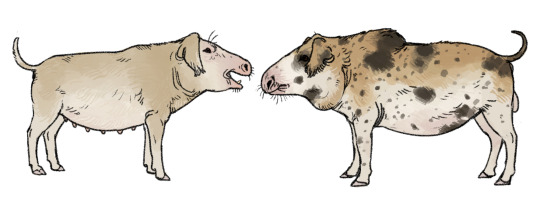
A pair of chul.
Finally pulled the plug on my long-debated 'are there any suids in this setting or just the entelodonts' issue. There are no pigs, but some of the domesticated entelodonts play similar roles.
Nechoi are a broad clade of ungulates. Most are medium-sized generalist omnivores, though a minority are very large and predominantly herbivorous (an even smaller minority are bear-sized and occupy similar niches).
One species of nechoi has been domesticated and is widely utilized as livestock, which I'll be referring to as chul (this is the Burri language word for these animals, and is the common term in the part of the setting I do most writing in).
Chul have four toes per foot, but two of these are entirely vestigial nubs of bone only visible as a small bump. They lack the tusks of some of their wild cousins, though the upper cuspids of boars are still somewhat exaggerated in length as a display feature. Most morphs have floppy ears, and virtually all have full-body fur cover. As an ancestral trait, boars develop huge cheek flanges and a fatty back hump, which primarily serve to display fitness to prospective mates and intimidate rivals (the flanges may also provide a degree of protection to the face and neck during fights). Some domestic morphs have lost this trait, but it is very often preserved for its utility as a source of oil or calorie-dense meat.
As livestock, their main utility is for meat and hides. They do not provide many resources while alive (save for manure and perhaps blood), so they are rarely central to the subsistence of people who tend them. Sows well-accommodated to human handling may allow themselves to be milked, but their milk output is low and the flavor is notably gamey, and no domestic populations exhibit selection for milk production. What makes them most valuable as livestock is their generalist diets. They can eat almost anything, are not dependent on seasonal growth, and are low maintenance and do not have to be moved between different pastures. Chul can essentially be fed on garbage, and transform this into a large meaty carcass and good hides.
They primarily eat nuts + seeds + tubers + fruits + leaves + invertebrates, and will opportunistically predate on small vertebrates. They readily consume carrion, and their powerful jaws and large molars are capable of crushing bone. Their heads are not as adapted for digging as pigs, instead having flexible lips to select and crop food items. When pursuing edible roots/tubers, they usually dig scrapes with their hooves or rip whole plants out from the ground.
In captivity, Chul are usually provided refuse to eat (inedible parts of crops, byproducts of butchered animals, uneaten or rotten food, etc) and will roam a small home range to supplement this with forage. The flavor of their meat ultimately depends on their diet, which can cause notable individual/regional variations in taste. They are sometimes 'finished' on a higher quality diet of grain/nuts/starches/fruit to produce a mild-tasting carcass with sweet fat.
They pant and sweat to thermoregulate and are not dependent on wallowing, though will gladly do so when given the opportunity (they're also fairly strong swimmers). They have sweat glands across most of their bodies, and will sweat very heavily in heat and require large amounts of water to stay hydrated. They originated in the tropics and do not molt into winter coats, though some populations in temperate climes have adapted via thicker year-round coats (though usually must be actively fattened before winter. They require a lot more upkeep in temperate zones and aren't as common there).
They are notably vocal. When foraging together, they make soft barks to keep track of each other (kind of like this). Babies produce squeaky bleats as contact calls (kind of like this, but much shorter). Boars are known to produce loud, deep bellows when displaying (sounds somewhat like a red deer but a little higher). All will produce low moaning growls when threatened, sharp barks when behaving aggressively or in pain, and panting huffs when excited/happy/playing.
When left to their own devices, they generally form into herds of sows/young/juvenile males. They do not establish discrete territories, but will generally stick to overlapping home ranges as long as food resources remain reliable. They are very social animals, and these herds can become quite large when resources allow (though they are typically on the small side, with 2-6 adult sows per herd). Sow bands form social hierarchies based primarily around size and age. Dominant sows are usually the ones to chase off subadult boars, and may chase away subordinate sows if resources are scarce. Unfamiliar sows will be integrated into herds with little issue if food resources are stable (though the process entails a few hours of posturing and displaying to keep the hierarchy established).
Subadult males usually live in small bachelor groups (almost always with siblings from the same litter), which form dominance hierarchies largely based upon size. Boar bands with stable hierarchies may remain together for life, and have greater reproductive success overall than lone boars. However, boars can be extremely aggressive towards unfamiliar boars, particularly when in the presence of sows in estrus. There are some ritualized elements to confrontations between boars to prevent escalation into deadly fights. Most confrontations can be resolved with posturing, roaring and yawning to display teeth and jaw size, and will usually escalate no further than shoving matches before one backs down. Fights usually begin with face to face open mouth posturing, which will turn into slashing and biting with the cuspids. Outright fights can be deadly, and boars with a number advantage may not stop until the opponent is mortally wounded or dead. Even when confrontations do not end in fights, confident boars are known to target the scrotum of fleeing rivals in attempt to castrate them.
The best practice is to geld most of your male chul and keep only one boar per herd. It is generally safe to keep multiple intact boars together if they're from the same litter, but this can create other problems, as boars in bands will wander farther and are likelier to get into confrontations with those of your neighbors.
They are also more physically dangerous in general than domestic pigs, being similar in size but stronger with a significantly more powerful bite force. They are not particularly aggressive towards people, however. Most respond positively towards the company of handlers and enjoy close interaction, and are likelier to hurt you by accidentally knocking you over than in acts of aggression.
All in all they cause proportionately fewer deaths than cattle. The big difference is that a cow who kills you will ultimately leave your corpse alone, while a chul will readily eat it.
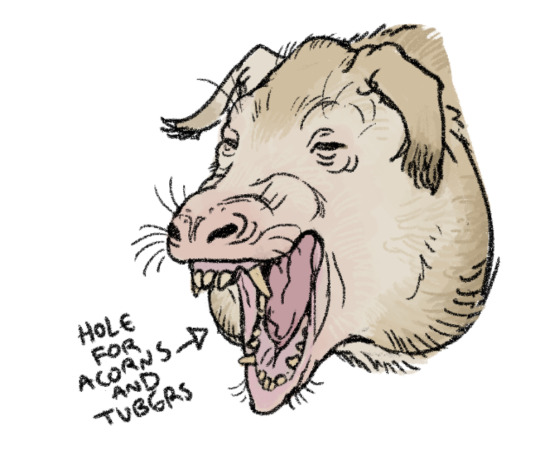
284 notes
·
View notes
Text
Let's talk about macro extension tubes.
I just saw this video recommended to me.
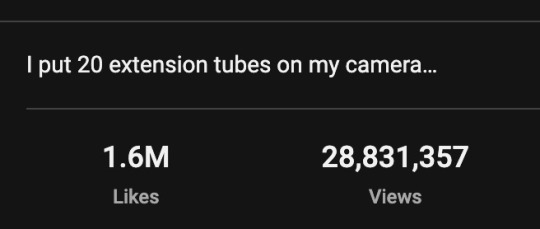
This has so many views and it is so bad.
This is not how macro extension tubes work.
At all.
You can't just keep adding more of them to get more macro. All you are doing is reducing the amount of light reaching the sensor and making it harder to take your photo.
All lenses have a minimum focusing distance (A) and a minimum working distance (B).
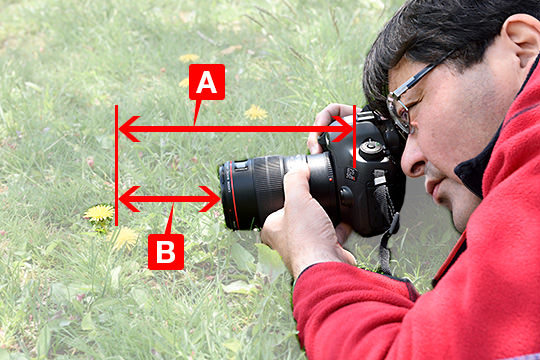
The minimum focus distance is measured from the sensor. This is the absolute closest distance where you can attain sharp focus on a subject. This is usually the spec the camera manufacturer gives you, but it isn't very useful because it doesn't take the length of the lens into consideration.
Minimum working distance is how close the end of your lens is to your subject. You figure this out by adding the flange distance (google it for your camera), and then add the length of your lens, and then subtract that from the minimum focus distance.
Whatever is leftover is how close you can get to stuff.
In this example, this is as close as the lens can get to the flower before it can no longer achieve sharp focus. If you get any closer, it will be blurry.
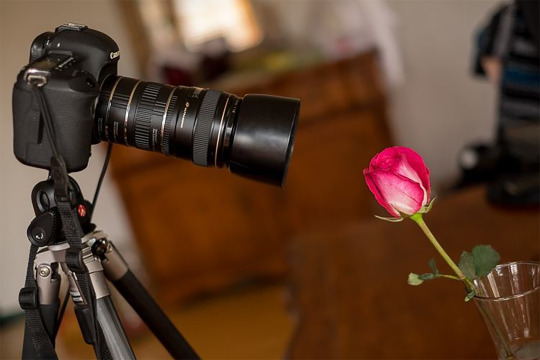
If you have a short working distance, this can be problematic for macro work. Your lens could create a shadow on your subject. You might be so close that you disturb the insects you are trying to shoot. You risk scratching your lens if you are shooting near rocks or other scratchy objects. So finding a macro lens with a decent working distance is always optimal. You can back off from your subject and get a lot of light in there and not have to worry so much about disturbing critters.
But if you don't have a macro lens, you can increase the magnification of any lens by adding extension tubes. It is a low cost way to get into macro photography, but it isn't a perfect solution.
Before I can tell you what macro extension tubes do, let's quickly talk about what macro actually is.
Macro magnification is usually measured starting at 1:1 reproduction or 1x. (Some manufacturers start at 0.5x or 1:2 reproduction, but most photographers don't actually consider that macro. So watch out for that in lens specs.) 1x magnification means the thing you are shooting will appear on the sensor the same size as in real life.
So if a lens has a 0.25x magnification, an object will only take up 25% of the image sensor. (The rectangle on the right side.)
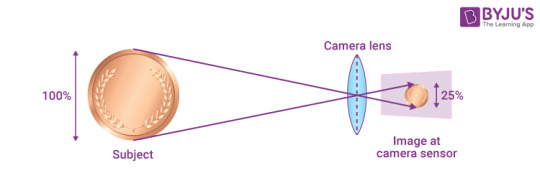
But at 1x magnification, it will be reproduced exactly as it is in real life on the sensor.
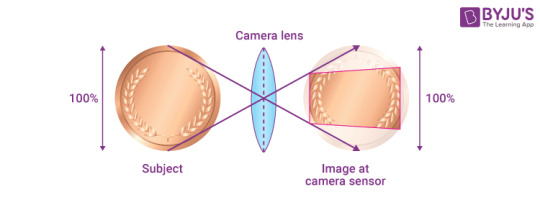
If you have a 2x lens or 2:1, it would appear twice as big as the image sensor.
So what does an extension tube do?
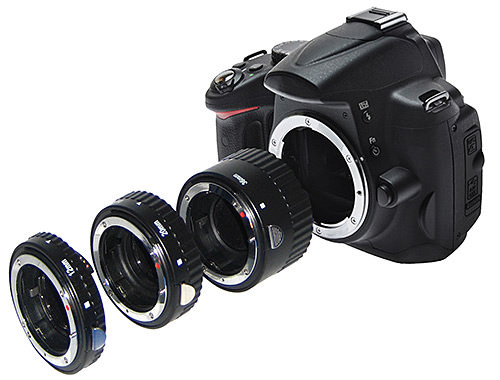
Extension tubes are just spacers that shorten your minimum focus distance. They take the red arrows and change them to the yellow.
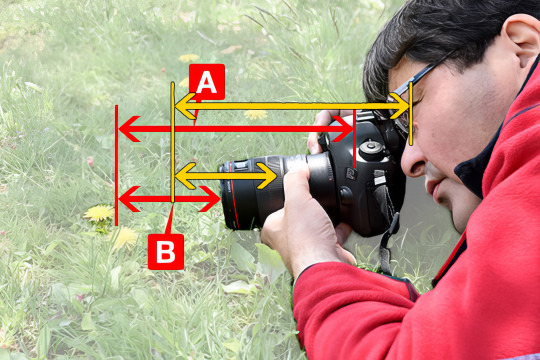
They push your lens farther from the sensor and allow you to get closer to your subject.

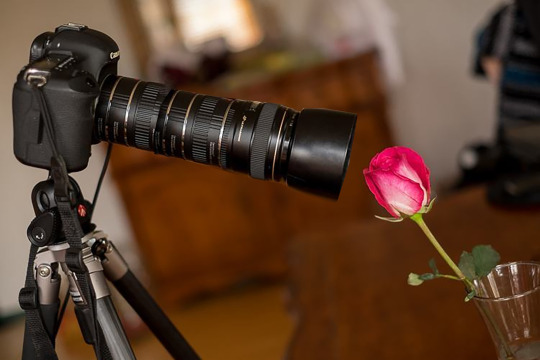
This causes an increase in magnification.
Think about how a magnifying glass works. You pull it closer to you so that everything gets bigger in the lens. That's essentially all the tubes are doing.
The first downside to extension tubes is they reduce the amount of light by quite a bit. The inverse square law says the farther light travels, the lower the intensity. So the more tubes you add, the more light you have to add to the scene. Or you have to do a really long exposure on a tripod.
But the decrease in working distance is a problem as well. You may find you have to put the front of the lens a few millimeters away from your subject to get a meaningful increase in magnification. And because you can't phase into objects, there is a limit to how many extension tubes you can use to affect magnification.
At some point, you are actually placing the working distance *behind* the front of the lens. After this point you can no longer increase the magnification. You're just making your lens focus farther away.
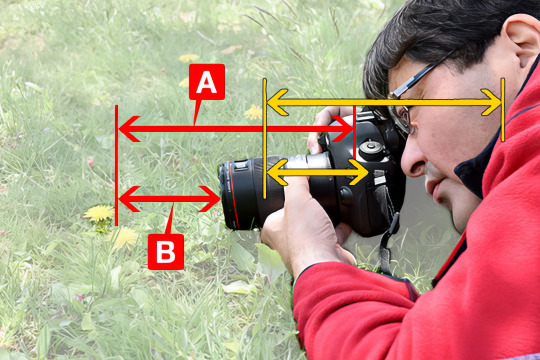
You could keep adding more and more extension tubes, but it would not allow you to get any closer to your subject.
If you put 20 of them on, you are just doing this...

At some point, you'll have to violate the laws of physics.

The lens used in the video is already a macro lens capable of 1:1 reproduction.
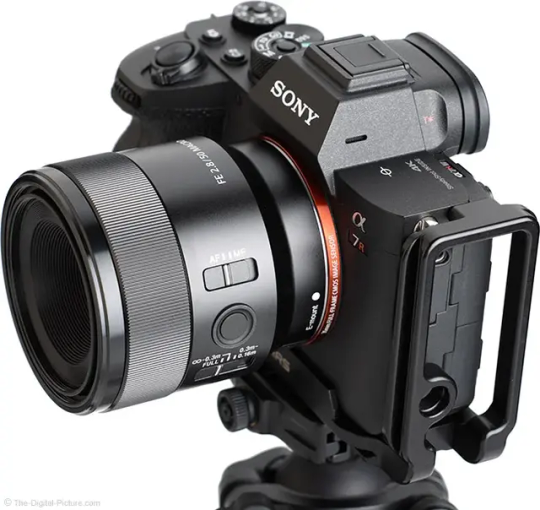
This lens has a minimum focus distance of 160mm. But it has a minimum working distance of only 43mm (1.7").
Extension tubes are measured in millimeters. The ones in the video come in 16mm and 10mm sizes. He alternated them.

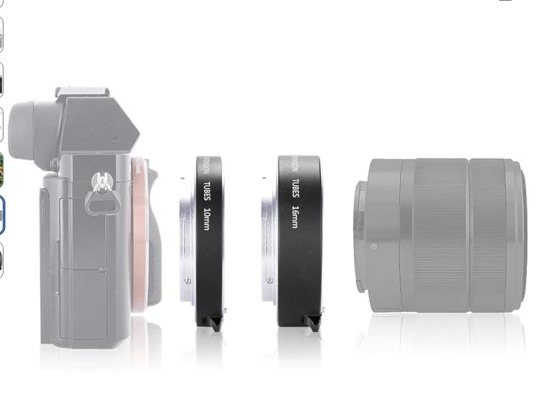
So in order to reduce the working distance to the point a subject would nearly be touching the front of the lens, he could put on a maximum of 3 tubes.
The red lines below show how much each tube would reduce the working distance.
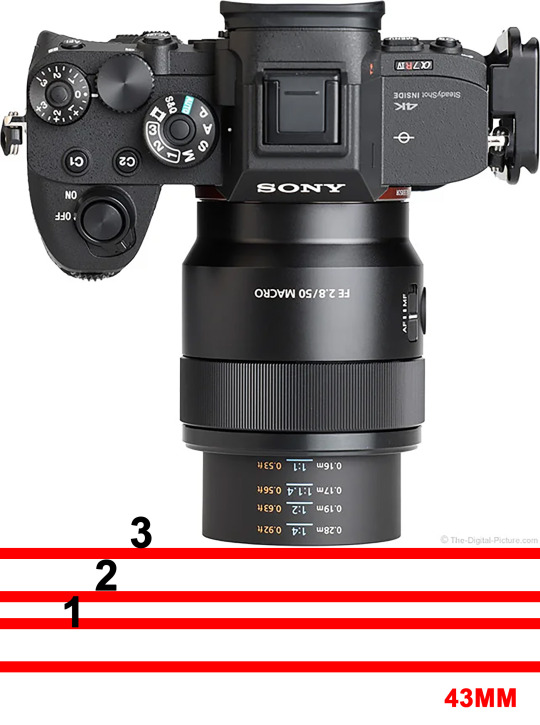
A 10mm, a 16mm, and a 10mm would reduce the working distance by 36mm—leaving him about 7mm of space in front of his lens to achieve focus.
He could add another 10mm tube if he didn't mind his subject basically touching the lens, but it is very difficult to get that close in a real world scenario and achieve a decent result.
If he put on 20 tubes, that would reduce the working distance by 260mm. And since there is only 43mm in front of the lens to work with, he is overshooting the minimum possible working distance by 217mm or about 8.5 inches.
He's basically doing this...

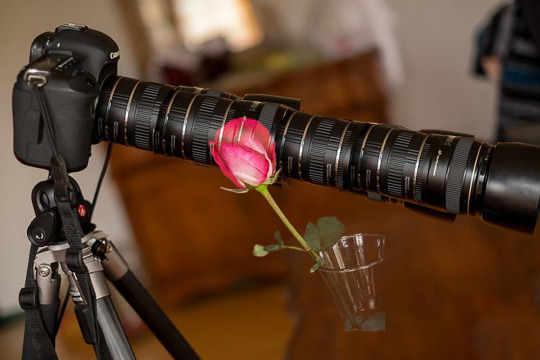
He overshot by about 17 tubes—worth about $400. Though he probably made that money back in views. So I guess it was worth it.
But it is really bad information and may cause people to buy a ton of tubes expecting to get super macro results.
The only real way to significantly increase magnification is to buy a lens specifically designed for it. They make macro lenses up to 5x and after that you are looking at microscope objectives.
With extension tubes you might be able to get a non-macro lens to achieve close to 1x or better, but there is no low cost way to get much beyond that.
To review...
Figure out your minimum working distance. If google fails to give you the answer, you can just get a tape measure and figure it out on your own.
Let's say that the working distance is 50mm.
That means you can add up to 50mm of extension tubes to get a bump in magnification. (Though that would be touching the lens, so I'd probably do 30 or 40mm of tubes maximum.)
Adding more tubes beyond 50mm will not increase your magnification.
It will just make your camera look like it is compensating for something.

200 notes
·
View notes
Note
I BRING YOU RANDOM INFORMATION ABOUT LACTATION YOU DID NOT ASK FOR BUT I OFFER ANYWAY BECAUSE MARINE CENTRE AU INVOLVES ✨️the pregante ✨️ (misspelled on purpose)
So, one of the big things is that the baby doesn't just have their mouth on the nipple, but part of the boob as well. That, and if breastfeeding hurts, then something is wrong with either the position or something else. Along with this, colostrum is milk. Don't listen to anyone who says it isn't milk, they're lying.
Another thing is breast pumps! Some flange sizes for them are really hard to come by, especially smaller sizes. Those likely need to be specially ordered.
Also! Nipple shields exist and come in different shapes because, just like the boobs they're part of, nipples have different shapes as well.
Why do I have this information? My mother is a lactation consultant! She inflicts this information on me on a regular basis and has crochet boobs! I'm simply spreading her tiddy expertise to those who might need it for either writing purposes or real life purposes.
Hehehehehe, I love this. Fun fact along that line because I work with horses who just had foals, foals if they do not suckle within a few hours they will die due to not getting the Colostrum and antibodies they need. We had to actually hold my little girl up to suckle. But she's now over a month old and a very strong and playful foal.
(May have been planning on using this in this fic when you sent me this)
also all I can think is when mc has the pups it's just them looking stunned at these two little babies and then to Quin. "Bayley what am I supposed to do, this isn't a human back I can't just breast feed them can I?, wait I have to don't I or they won't get the Colostrum they need, fuck what am I mean to do??"
Dale: they have sharp little teeth I wouldn't want that at all.
Mc: actually they have retractable teeth.
The team: since when?!?!?.
Mc remembering finding out after getting eaten out by Bluestreak: uhhhhh
_____________
Mc sitting on the beach nursery two very small pups as Bumblebee sits beside them excitedly cooing and wanting to hold one of the babies.
Mc: be gentle Bee they are still very small.
Bumblebee: 'I will guard them with my life they are my little bitties.'
Pups with very grabbing hands wanting to cuddle with Bee, turns into little pile of pups and yearling.
__________________
Mc having waterlogged skin from having to sit in a pool for hours on end with the pups while both nursing and making sure they eat the tiny little fish they are feed.
Oceanides all watching throught the glass/ fence becuase they aren't allowed in, due to Quin fearing they might try and mate with MC again.
__________________
Quin: congratulations your the first human to ever give birth to oceanides, that has been studied, and both pups are healthy and with no issues. On the other hand the oceanides didn't have any other pups this year.
Mc: your telling me I'm the only one who had pups, and I'm not even one of them!!.
Quin: Yes, turns out apparently the human body seems to cope better with pups than theirs do, on that note, Magic (mirage) may or may not have kidnapped a man who he thinks he can have a pup with"
_________________
#transformers#transformers idw#mtmte#transformers x reader#transformers x human#mermaid au#mermen#merformers#mermaid transformers
116 notes
·
View notes
Text
Round 3 - Chondrichthyes - Heterodontiformes




(Sources - 1, 2, 3, 4)
While several extinct genera of Heterodontiformes are known from the Jurassic, today only one genus, Heterodontus, the “Bullhead Sharks” remains. Ten living species of bullhead shark have been described.
Bullhead sharks are relatively small, with the largest species reaching just 1.65 metres (5.5 ft) in maximum length. They have tapered bodies, with blunt, proportionally large heads, relatively small mouths, pig-like snouts, and pronounced ridges above their eyes. They have two large dorsal fins, the first larger than the second, and an anal fin. Both dorsal fins have a rigid spine at the front of each fin which is used for defense. Bullhead Sharks are bottom feeders in tropical and subtropical waters. They have cusped grasping teeth at the front of the mouth, and flattened teeth at the back of the mouth. They use the flattened teeth at the back of their mouth to crush hard-shelled prey like bivalves, crustaceans, and sea urchins, and the grasping teeth on soft-bodied prey like worms, anemones, and octopuses. They hunt at night by "walking" along the sea floor with alternating motions of their pectoral and pelvic fins.
Bullhead shark egg cases are shaped like an auger, with two spiral flanges. This allows the egg cases to become wedged in the crevices of rocky sea floors, where the eggs are protected from predators; however, some bullhead sharks deposit their eggs on sponges or seaweed. Due to their spiral shape, each egg case requires several hours to rotate out of the mother shark's cloaca (Oof). She usually lays two at a time. The eggs typically hatch after 7 to 12 months, depending on the species. The pups will usually reach over 14 cm in length by the time they leave the egg case.
The Heterodontiforms appear in the fossil record in the Early Jurassic, with modern forms appearing in the Late Jurassic. Despite the very ancient origins of the genus, phylogenetic evidence indicates that all living species in the genus arose from a single common ancestor that survived the K-Pg extinction.

Propaganda under the cut:
Female Japanese Bullhead Sharks (Heterodontus japonicus) are known to deposit their eggs in communal nests, with as many as 15 eggs left in the same nest.
Horn Sharks (Heterodontus francisci) (image 2) have relatively small territories they hunt in at night, returning to the same “house” during the day. They may remain faithful to the same territory for over a decade. Now that’s a homebody.
Horn Sharks are queued by light rather than by an internal clock. In laboratory settings, they will become active as soon as lights are turned off. If they are in the middle of something when the lights are turned on, they may stop swimming and sink to the bottom. In one experiment where the sharks were kept in darkness, they remained continuously active for 11 days before slowing from fatigue. (☹️)
The Horn Shark generates the highest known bite force relative to its size of any shark, which it uses to crack into mollusks, echinoderms, and crustaceans. One study found the average bite force for this species in the wild to be 95 N with a maximum of 135 N, while under experimental conditions sharks could be induced to bite with over 200 N of force.
Female Horn Sharks in the wild pick up their egg cases in their mouths and wedge them into crevices to keep them safe.
In July 2018, three people were arrested after stealing a juvenile Horn Shark from the San Antonio Aquarium. The shark was scooped out of its tank and smuggled out of the aquarium in a stroller, wrapped in a wet blanket. It was thankfully returned unharmed two days later.
The Crested Bullhead Shark (Heterodontus galeatus) (image 4) produces spiral-shaped egg capsules that are secured to seaweed or sponges with long tendrils.
The Crested Bullhead Shark is a major predator of the eggs of the Port Jackson Shark! Individual sharks have been observed taking the egg capsules in their mouths and chewing on the tough casing, rupturing it and allowing the yolk to be sucked out, or simply swallowing the capsules whole.
The Port Jackson Shark (Heterodontus portusjacksoni) (image 1) is a migratory species, traveling south in the summer and returning north to breed in the winter. Males tend to arrive to the breeding grounds first with the females arriving later and staying later, perhaps as a means to reduce egg predation upon their newly laid eggs.
While juvenile Port Jackson Sharks are not particularly social, adults are often seen resting in caves in groups, and prefer to associate with specific sharks based on sex and size. In lab settings, these sharks were shown to have unique personality traits and preferences, can be trained, can count, and can learn by watching other sharks.
66 notes
·
View notes
Text
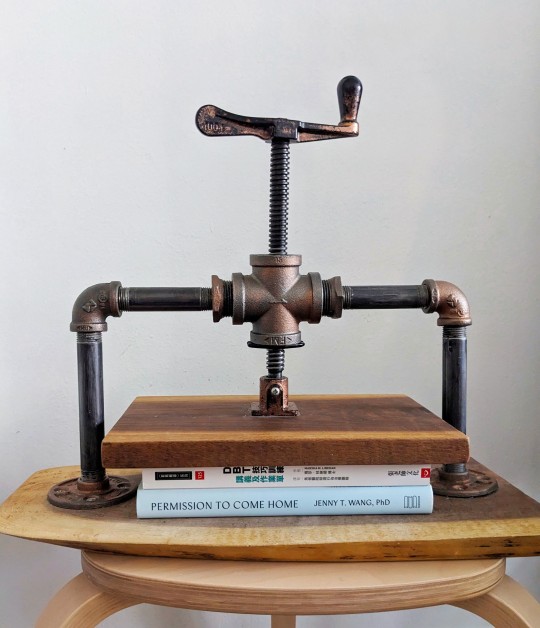
FanFic Pipe Book Press
In 2022, I prototyped an affordable nipping press using black steel pipe fittings. The challenge: To make something under $100, compact, portable, and easy to make without electric tools.
I'm sharing the supply list here (under the cut) with updated thoughts and notes.
Please note that when I've linked to Amazon in this post, I'm using an affiliate link.
Basic Materials
QTY 1 - Press Screw 2 - ½ pipe Mini Flanges 2 - ½ pipe 90° elbow fittings 2 - ½ pipe 4in nipples 2 - ½ pipe 6in nipples 2 - 1x½ pipe hex bushing reducer 1 - 1x1 pipe cross tee 1 - Large hardwood board at least 16"x6" 1 - Smaller hardwood board ~ 9-10" across and at least 6" wide 8 - #8x¾ flat head wood screws
Press Screw The press screw is the crank/long screw in the middle of the nipping press. As of this writing, the most affordable press screws are the one by Pony Jorgenson or the one by ShopFox. For just a little bit more, McMaster Carr sells a beautiful stainless steel hole mount screw clamp from Taiwan.
½ pipe parts These form the bones of this book press. Pipe fittings are designed to be resistant to water pressure and are easy to assemble. You can find some at your local hardware store (cheaper) or order on Amazon. You have the option to use basic black carbon steel pipe or go fancier by using stainless steel. This will likely run you between $40-$65.
Wood & Screws You'll want a hardwood (like Oak, Birch, Walnut, etc.) not a softwood (pine or basswood) for this project to prevent warping. A strong plywood such as baltic birch may work as well. Most hardware stores will cut wood to size for you. The screws are for attaching the pipe to the wood--but, depending on how you want to engineer the press, you could also use bolts.
Additional Supplies
Sandpaper in various grades
Sealant for the pipes (especially if you use pipe that sheds carbon, so you don't stain your books. I used clear coat, you can look into shellac and other finishes that work for you.)
Wood Finish (I used tung oil, you have so many options)
Screwdriver, Hand Drill, or Electric drill
Mallet (if you want to pound the lead screw into the cross pipe
Epoxy to glue the lead screw into the cross, or to affix the base of the screw to the wood.
Optional Upgrades
Use a hole saw to drill through the wood and a forstner bit the size of the flange to run the flange through the wood from the bottom. That way, pressure isn't put on the wood screws and the press will last longer.
Use Rub N' Buff to decorate the press
Use longer nipples, such as 8" or 10" nipples, instead of the 6" to get more daylight.
This press is sized for fanfic binders, but if you want a bigger one you can size up the pipes.
If you can afford thicker wood, especially for the base, you may want to opt for 8/4 wood instead of 4/4 wood.
Happy crafting! Let me know how things go, and if you end up making one, I'd love to see a picture.
147 notes
·
View notes
Note
i want to start milking myself 😫 do you have any tips/ what is your favorite and/or most successful way. please help 😔
Hiii anon, thanks for the ask! 🤍
I’m at work but I’ll try and answer as best I can. While I’m not producing yet, I can definitely share my process:
stimulation, stimulation, stimulation! be it with pumps, your hands, a partner, whatever, make sure you’re stimulating those udders! I personally use electric pumps since I don’t have time to use a hand pump during the day. i can just plop them in my bra and go about my business. find what works for you and your lifestyle! just make sure if you get a pump, you're using the right size flanges. failure to do so will result in poor latching and the dreaded milk blebs...ouch.
stay consistent! the reason this blog exists is to provide me with motivation to not only keep myself on track (see my #milkspo! tag for that), but also to hold myself accountable. whenever i pump (or don't pump) i post it here to remind myself of my progress and to give myself grace if i slip up.
get yourself a set schedule! i pump pretty much every day 2-3 times after work so my schedule is 10pm, 12am, 2am. find a time that works for you where you can relax and stimulate those udders in peace!
help your body out! i take gummy lactation supplements to help increase milk flow, but i suggest you shop around for something that fits your body's needs. i for one can't stand pills so gummy supplements work better for me. another way to look out for your body is investing in nipple cream. i personally feel like this is non-negotiable if you're going to be pumping. the skin around your nipples can become cracked and dry from constant pumping, so the nipple cream will keep them moisturized and less miserable feeling.
lastly, don't compare your progress to others. inducing lactation isn't easy, but it is easy to get discouraged. just keep at it. you got this. i believe in you.
37 notes
·
View notes
Text
Swing Check Valve in Ahmedabad, Gujarat - Gold Techno Casting
Leading Swing Check Valve Manufacturer in Ahmedabad, Gujarat. Gold Techno Casting offers high-quality, durable check valves for industrial applications.
Google Map:--> https://maps.app.goo.gl/VipqqRBtjvzgGZS87
Swing Check Valve in Ahmedabad, Swing Check Valve in Gujarat, Swing Check Valves Manufacturer from Ahmedabad, Swing Check Valves Manufacturer from Gujarat, Manufacturer Exporter & Supplier of Swing Check Valves in Ahmedabad, Swing Check Valves Exporter Gujarat, Swing Check Valve, Check Valves in Ahmedabad, Check Valves in Gujarat, Carbon Steel CS(WCB) Swing Type Check Valve Flanged ASA150, Valve Size: 3.0 inch, Stainless Steel Swing Check Valve, Valve Size: 8.0 inch, Stainless Steel Swing Check Valve in Ahmedabad, Stainless Steel Swing Check Valve In Gujarat, Carbon Steel Swing Check Valve in Ahmedabad, Carbon Steel Swing Check Valve in Gujarat, Swing Check Valve Manufacturer in Ahmedabad, Gujarat, India, Top Swing Check Valve Dealers in Ahmedabad, Top Swing Check Valve Dealers in Gujarat, www.goldtechnocasting.com/carbon-steel-swing-check-valve-in-ahmedabad.php, Gold Techno Casting
#Swing Check Valve in Ahmedabad#Swing Check Valve in Gujarat#Swing Check Valves Manufacturer from Ahmedabad#Swing Check Valves Manufacturer from Gujarat#Manufacturer Exporter & Supplier of Swing Check Valves in Ahmedabad#Swing Check Valves Exporter Gujarat#Swing Check Valve#Check Valves in Ahmedabad#Check Valves in Gujarat#Carbon Steel CS(WCB) Swing Type Check Valve Flanged ASA150#Valve Size: 3.0 inch#Stainless Steel Swing Check Valve#Valve Size: 8.0 inch#Stainless Steel Swing Check Valve in Ahmedabad#Stainless Steel Swing Check Valve In Gujarat#Carbon Steel Swing Check Valve in Ahmedabad#Carbon Steel Swing Check Valve in Gujarat#Swing Check Valve Manufacturer in Ahmedabad#Gujarat#India#Top Swing Check Valve Dealers in Ahmedabad#Top Swing Check Valve Dealers in Gujarat#www.goldtechnocasting.com/carbon-steel-swing-check-valve-in-ahmedabad.php#Gold Techno Casting
0 notes
Note
Is it possible to share some details of how you're rerouting the floor vent through a cage platform? I was expecting to have to do that soon myself, so a reference would be really appreciated...
Yeah, totally! Sorry I took so long to respond. I wanted to get photos of the process and it's been slow-going with all the other things needing my attention.
You can buy a product kit called a toeductor that is specifically designed to route a floor vent through the toe kick under a cabinet. All you need is a jigsaw to cut an appropriate shape hole in your cabinet toe kick. This is best for a low-profile solution.
I, however, wanted a maximalist approach so I did it a little differently. Also I don't have a jigsaw. Also I'm not an HVAC professional so I might have donked this up. Maybe have a professional do your stuff instead of flirting with disaster like I do.
Process and pictures under the cut!
Supplies:
Foil tape for ducting
Duct clamp (optional)
Decorative register that fits on your platform (I went with a 4"x8" rectangle)
Magnetic register screen (optional)
6" flexible duct (I needed about 12" length, your mileage may vary)
Universal register box with flange, 6" duct opening and whatever size your decorative register is (mine is 4"x8" to 6")
Universal register box without flange, 6" duct opening and whatever size your existing floor register is (mine is 4"x10")
Drill and drill bit to make holes
Tool to cut the hole for your register
File to smooth the edges of your register hole
Scraper, if needed
Goof-Off or Goo Gone or whatever cleaner you have that takes off adhesive residue, if needed
Vacuum with hose, if needed
First pop off your old floor register. It should just pull right up. Look down in the floor hole and try to remember the last time you vacuumed in there. Find yourself unable to recall. Feel ashamed. If it's a new house for you, wonder if the previous tenant ever vacuumed in there and decide privately to yourself that they probably didn't. Get the shop vac and really get down in there, knowing realistically that this may be the last time you ever do so.
Assess the existing foil duct tape inside the register. Is it gross and crumpled into sticky wads, or is the seal still good? If needed, scrape off the old tape, clean off any residue, and re-tape any seams with the foil tape to make sure there are no air leaks. Leaky HVAC lines mean you're losing heating/cooling to the crawlspace under your house and that's $$$ literally going into the dirt.
Once your existing floor hole looks good, fit the un-flanged universal box over the existing register box and tape them together inside and out with the foil tape. Be careful, register boxes have sharp edges! Make sure there are no cracks or unsealed seams. I forgot to take pictures of this part. Sorry.
Fit the end of the ducting over the end of the register box. Again, tape around the outside and tape inside for a firm seal.


Now use the flanged universal box to determine where on your platform you'll be re-routing the vent. I'm doing mine in a door for ease of access, but it's personal preference. Place yours wherever works for you, so long as the duct isn't being obstructed and you have good air flow. Use a marker to trace where the hole for the outgoing vent will be. I'm using a PVC platform so I drilled holes along the line I traced and then cut between them with a hand saw. If you have a jigsaw, please use that instead. Clean up the edges with a file or sandpaper as needed.



Attach the flanged universal box to the inside of the hole you made. Use small screws or tacks or 100% silicone sealant to adhere the box to the inside of the cabinet. Seal up any seams with tape to prevent air leaks. You may at this point choose to use a duct clamp instead of foil tape, so that you can more easily access the inside of the duct if you find yourself needing to adhere the register to the box. Attach the other end of the 6" duct to the flanged universal box and tape or clamp it in place.

If you're using a screen like I am to prevent unauthorized snake walkabouts that detour into the HVAC system, pop your decorative register apart and sandwich the screen inside. I had to snip the edges of the screen to make it fit the clips that hold the register together. Do what you gotta.


The decorative register should slot right into the universal register box. If you don't seal it in place, you can pull it out at any time. I did find that the register is a bit heavy, as it is intended for use on the floor, and it fell out of its vertical mount easily. I opted to silicone it in place and use a duct clamp on the ducting and register box as described above.

My register looks slightly crooked in this photo, but in reality it's only because the hole itself is actually slightly crooked. Big sigh.

And we're done! Survey your work, knowing that some HVAC professional somewhere is looking at this post online and slowly shaking their head in horror at the atrocities we have committed.
#snake#snakes#reptile#reptiles#reptiblr#welcome to the house of snakes#snake room#janky construction with OMG Snakes
14 notes
·
View notes